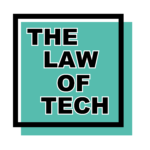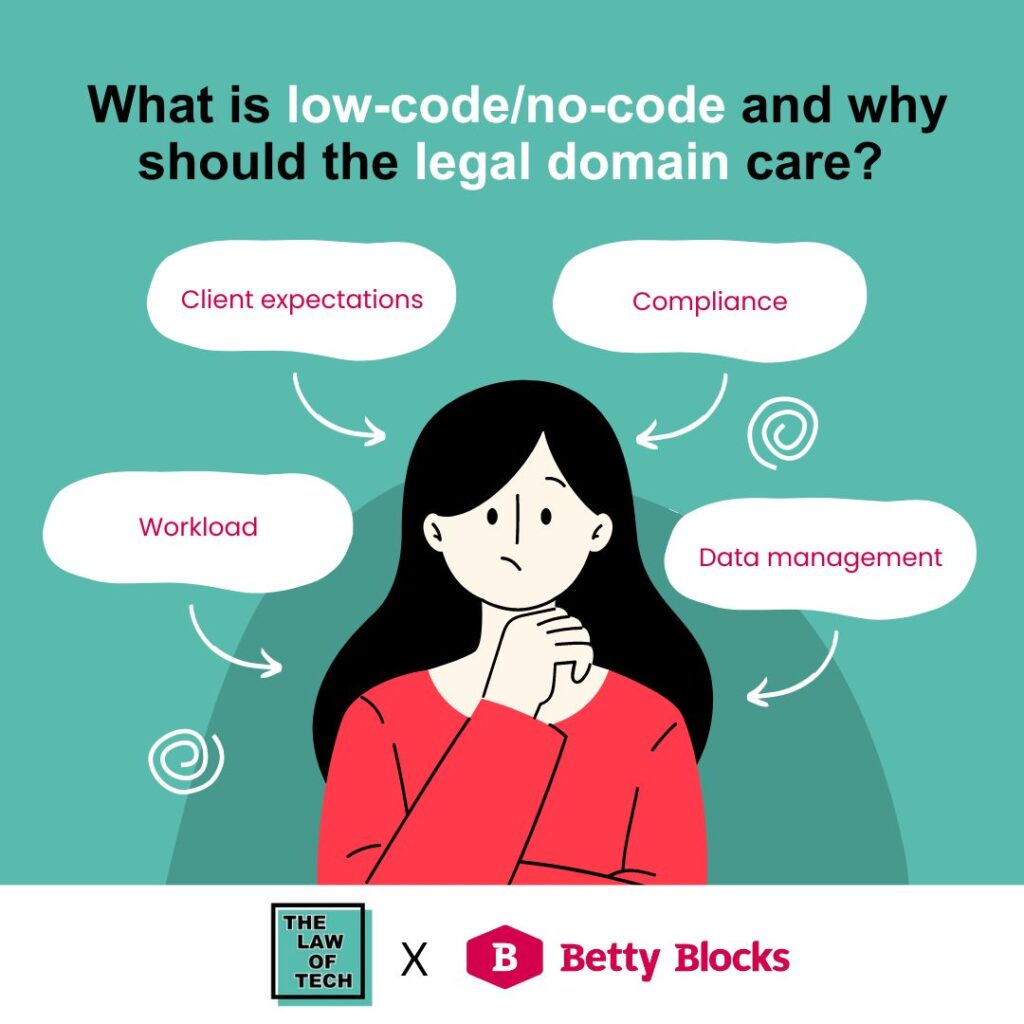Throughout human history, people have encountered challenges and sought solutions. From ancient times to the modern era, the drive to innovate and address problems has been a constant force propelling society forward. The legal industry too is built upon this premise, essentially placing at its core one question: how can we solve legal problems?
With the increased availability of data and the advent of new technologies to more easily and effectively make sense of such data, the demands of an increasingly digital and fast-paced world have begun to permeate the legal profession. Legal professionals are now facing mounting pressure to deliver more efficient, cost-effective, and client-centric services.
This is where low-code and no-code platforms are emerging as transformative tools for legal innovation, providing a universal language that bridges the gap between problem and solution. But what is low-code/no-code and how can it offer a tool to accelerate legal innovation?
Defining low-code and no-code
Before we delve deeper into the realm of low-code/no-code development, it is crucial to establish clear definitions as they provide the foundation upon which we build our understanding, ensuring that everyone is on the same page when discussing complex concepts.
Low-code platforms are software development tools that facilitate the creation of applications with no manual programming required. They provide visual interfaces, pre-built components, and a simplified development process, allowing developers to develop applications faster while retaining the ability to customise through code to build complete applications. In other words: low-code platforms strike a balance between efficiency and flexibility, making them suitable for a wide range of applications.
No-code platforms take simplicity a step further by enabling users, often with little to no coding experience, to build functional applications by putting the correct elements into place. Or, put differently, a no-code platform is a low-code platform that makes it possible to build applications without any coding. These platforms rely on visual development, pre-configured templates, and automated workflows, eliminating the need for coding entirely. In other words, no-code platforms democratise application development, making it accessible to a new non-technical class of developer — the Citizen Developer — and promoting rapid prototyping and deployment.
Why use low-code/no-code in legal?
The above definitions serve as our compass in navigating the landscapes in which they can be used, offering us valuable insights into their potential applications and the advantages they may offer. In the ever-evolving legal landscape, in particular, the adoption of low-code/no-code platforms has become a game-changer, propelling the industry into a new era of innovation and efficiency.
Legal professionals are currently grappling with several challenges that demand innovative solutions, including:
- Increased workloads – as the societal complexity increases, the volume of legal work will continue to grow, with legal professionals facing more paperwork, research, and administrative tasks.
- Changing client expectations – clients’ expectations have shifted, leading to an increased demand for more transparent, cost-effective, and efficient legal services.
- Regulatory changes – with the continuously evolving regulatory landscape, the legal industry has to keep up to date and in line with compliance requirements.
- Data management – the handling of vast amounts of data from legal sources has become increasingly complex and demands efficient and effective management.
It is here that low-code and no-code offer transformative solutions, allowing legal teams to better streamline workflows, reduce costs (of development), and maintain unparalleled flexibility in their approach to solving legal problems. With a visual interface, pre-built templates, and drag-and-drop functionalities, these platforms empower legal professionals in a variety of roles to create tailored solutions without the need for extensive coding knowledge. Examples of potential application include document automation, workflow management, client portals, and compliance monitoring.
Driving legal innovation through low-code/no-code
Due to their facilitation of efficiency and reduction of costs, low-code/no-code platforms offer valuable tools to accelerate legal innovation. That is because they solve two major issues traditionally encountered in application development:
- Coding by hand is an extremely time-intensive and complex process.
- There is a serious shortage of qualified developers to meet the current demand for software development.
In the legal sector, innovation teams oftentimes struggle to realise any real and effective innovation, largely due to their overreliance on IT teams and their focus on getting buy-in from partners and law firms. This makes it very difficult for them to drive innovation with practical outcomes. Depending on the circumstances and technical human resources available to each organisation, the legal industry could benefit from the application of low-code and/or no-code tooling in their journey toward innovating traditional products, services and processes. The successful rollout of such an endeavour, however, requires an open mind, an understanding of what legal problems are to be solved, and the involvement of the stakeholders making use of the relevant applications. By sparking the creativity of the legal workforce and encouraging a collaborative approach, a mindset of continuous innovation is put in place that can help drive the legal industry and those working within and with it forward.
As the legal industry continues to adapt to the demands of the digital age, embracing low-code/no-code is thus not merely an option; it’s a strategic imperative that enables professionals to deliver faster, more cost-effective, and client-centric services, ultimately allowing them to generate value and meet stakeholder expectations (e.g. enhance client relationships, increase client acquisition, etc.).
The Law of Tech x Betty Blocks video series
Want to learn more? We are excited to announce the publication of our very first video episode in collaboration with our partner, Betty Blocks. Central to this episode is the question: What is low-code/no-code and why should the legal domain care?
Join us and our featuring Betty Blocks representatives Chris Williams (Head of Community Building at Betty Blocks) and Odin van Eijk (Product Owner at Betty Blocks) as we explore the myriad ways in which these innovative tools are reshaping the future of legal practice.
To kick off our collaboration, we recently released an exclusive episode demystifying misconceptions in legal innovation with Chris Obdam (CEO at Betty Blocks) and Chris Williams (Head of Community Building at Betty Blocks). In this episode, we delved deeper into the misconceptions surrounding legal innovation and explored its true potential.
Want to know more? Take a listen on your favourite podcast platform now!

In continuation of our collaboration, we will soon be releasing an exclusive video series focused on the application of low-code/no-code in legal and how these platforms may be used as tools to foster legal innovation. The first episode will be published on the 21st of September 2023, so stay tuned for an insightful conversation on this exciting topic.
The Law of Tech X Betty Blocks partnership aims to create content and organise events with the aim of bringing law and technology closer together to facilitate a future-proof legal industry. Keep an eye out for upcoming content as part of our partnership through our website and social media.
Support. Empower. Connect. This is The Law of Tech.

